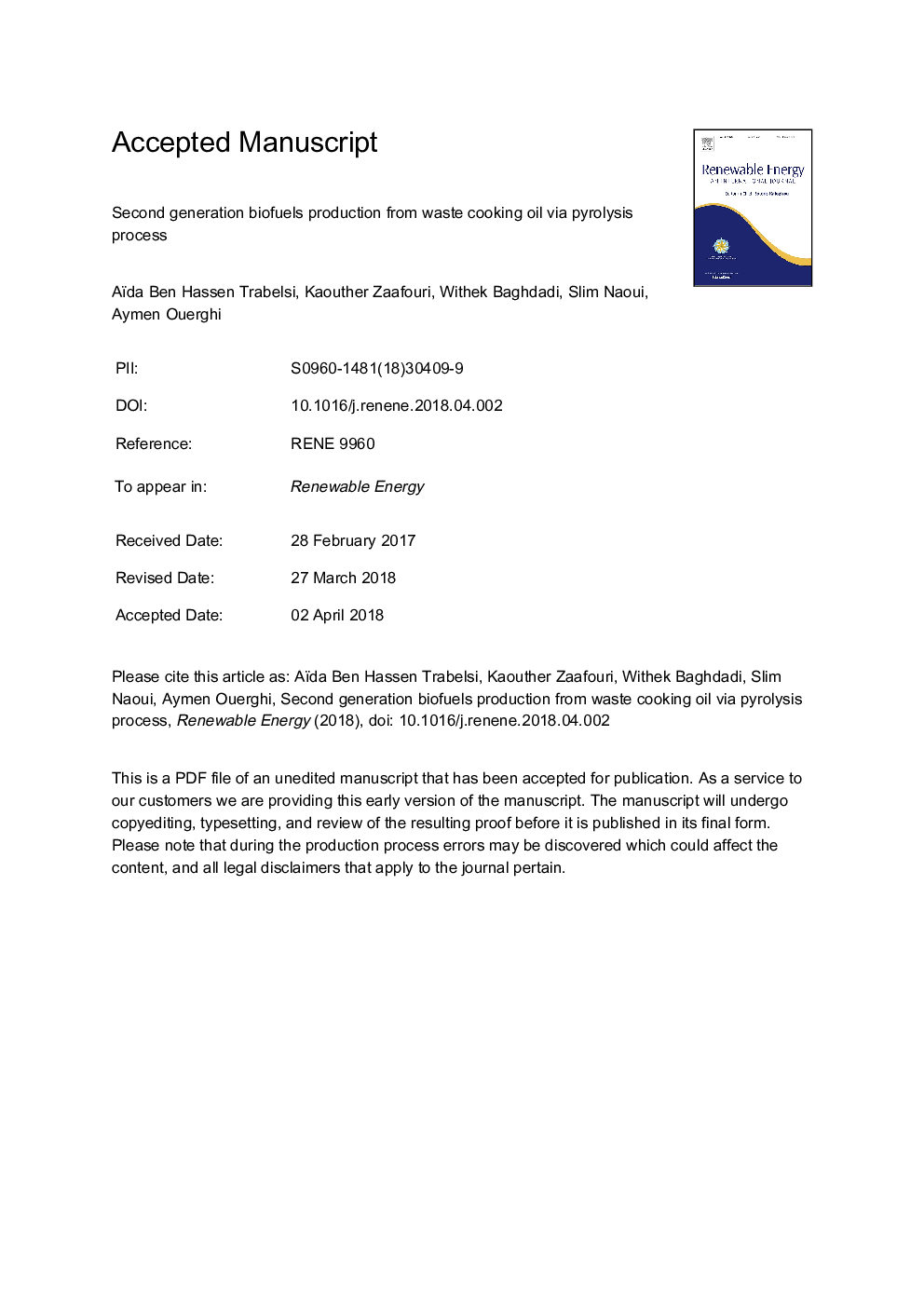| Article ID | Journal | Published Year | Pages | File Type |
|---|---|---|---|---|
| 6764340 | Renewable Energy | 2018 | 29 Pages |
Abstract
The thermal cracking of waste cooking oil (WCO) via pyrolysis was performed using a laboratory scale fixed-bed reactor. The effects of the final pyrolysis temperature (from 550 °C to 800â¯Â°C) and the heating rate (5â¯Â°C/min, 15â¯Â°C/min, 20â¯Â°C/min, 25â¯Â°C/min) on pyrolysis products distribution has been investigated and a maximum bio-oil yield of 80â¯wt% has been obtained at 800â¯Â°C and 15â¯Â°C/min. The bio-oil fuel properties shows that this pyrolytic oil has high caloric value (HHV around 8843â¯kg/Kcal) promoting its use as a liquid fuel but some other properties (high acidity index around 126.8â¯mg KOH/g sample and high viscosity about 8.95â¯cSt) need to be upgraded. The GC/MS characterization of the bio-oil highlights its high molecular complexity allowing it to be used as source of chemical products and of active molecules. The syngas heating value (reaching 8â¯MJ/kg) is suitable for its application as source of energy for the pyrolysis reactor. The remaining biochar is suitable for application as fertilizer since it is rich of iron and organic carbon. The stochiometric model of WCO pyrolysis has been established basing on the pyrolysis products yields, the CHNS-O composition of raw material and remaining biochar, and the syngas chemical composition.
Related Topics
Physical Sciences and Engineering
Energy
Renewable Energy, Sustainability and the Environment
Authors
Aïda Ben Hassen Trabelsi, Kaouther Zaafouri, Withek Baghdadi, Slim Naoui, Aymen Ouerghi,
